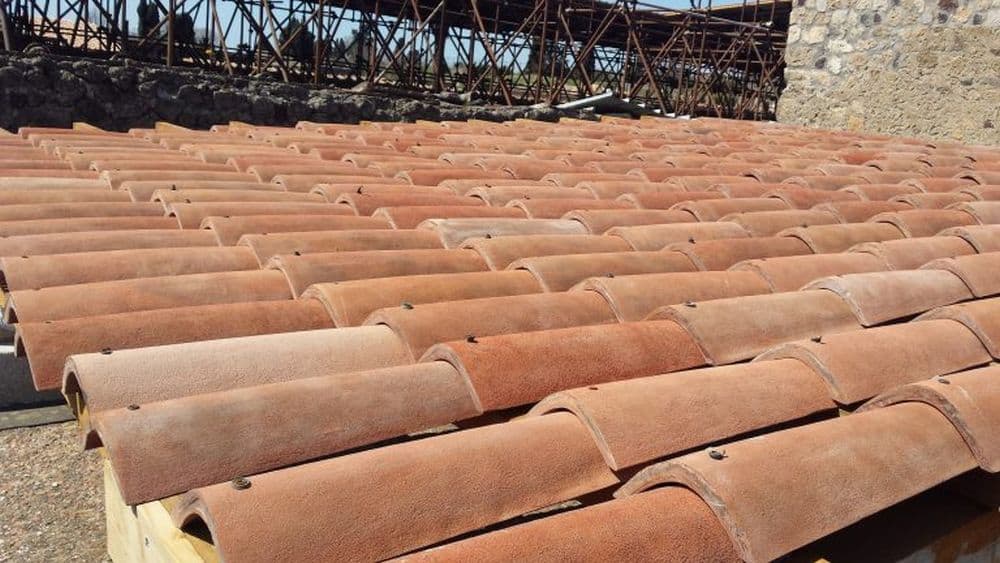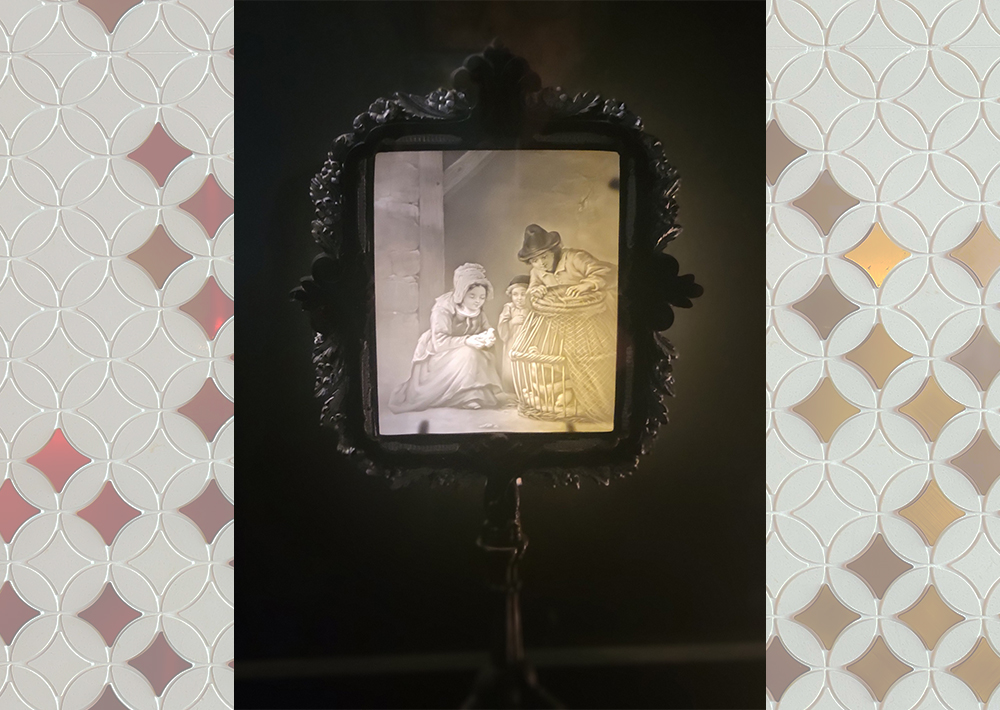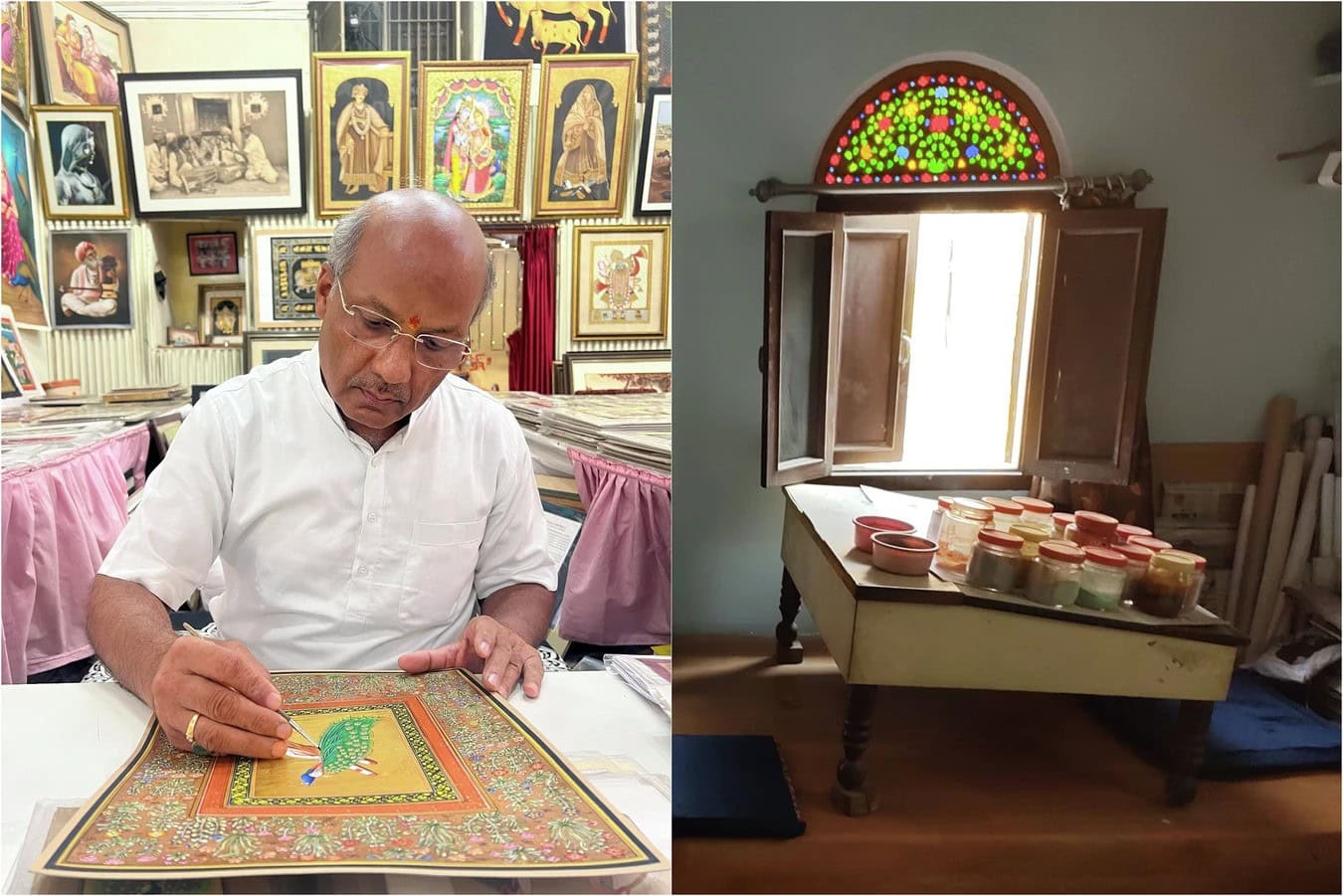
[Image above] Example of the terracotta-styled Invisible Solar Rooftile panels that are meant to blend into the Archaeological Park of Pompeii while generating power for a new sensor system. Credit: POCITYF, courtesy Dyaqua
With this year marking the halfway point in implementing the United Nations Sustainable Development Goals, which were adopted in 2015, governments around the world feel the pressure to double down on their commitments.
For countries that are home to designated historical sites, the implementation of new sustainable materials and technologies is complicated by the need to preserve the area’s historical nature. This complication is especially relevant to Italy, which is home to the largest number of UNESCO world heritage sites, with 58 world heritage locations.
In May 2015, the Italian Ministry of Cultural Heritage, Activities, and Tourism (MiBACT) and the National Research Council of Italy (CNR) signed a 7-year framework agreement to identify and promote research and innovation programs, as well as demonstration and educational programs, in the cultural heritage and tourism sector.
The following March, the two organizations signed an operating agreement to develop an integrated technological solution to improve the safety and sustainability of the Archaeological Park of Pompeii, a UNESCO world heritage site since 1997.
Deemed Smart@Pompei, this pilot project aims to implement an interconnected array of sensors throughout the site that generate alarms in cases of danger, vandalism, or exceeding limits of environmental and energy impact. The main backbone of the integrated system consists of a fiber-optic network and a wireless network managed by a Milestone Systems XProtect open platform video solution.
“Thanks to the IoT (Internet of Things) technology, the technologically integrated system is scalable and flexible, so that other devices and components, as well as other useful sensors for optimal and sustainable site management, can be added at any moment,” the project website explains.
Ideally, this system will serve as a model for protecting and monitoring other historical sites while incorporating sustainable technologies and practices.

Credit: Milestone Systems, YouTube
While visitor safety is a main goal of the new system, with particular attention given to assisting people with disabilities, it also needs to preserve the artistic and historical elements of the site. That is why, in 2018, the Smart@Pompei project managers teamed up with Dyaqua, a small family-run Italian business that offers a unique type of photovoltaic panel.
In a Fast Company article, Dyaqua’s spokesperson Elisa Quagliato explains that her father, Giovanni Battista, started Dyaqua to create a solar panel that could be installed on any of the thousands of historic buildings in Italy. Currently, these buildings cannot host solar panels due to laws requiring the buildings maintain their original appearance.
Initially, Battista and his family produced a line of ultraresistant LED lamps that look like common building materials, such as stones, bricks, and paver tiles. But in 2016, they officially launched Battista’s ideal product, which he had been developing since 2009—the Invisible Solar Rooftile.
The Invisible Solar Rooftile is a tile-like module covered in a nontoxic and recyclable polymeric compound that can look like different main building materials, such as terracotta, but it allows light to pass through and feed photovoltaic cells hidden inside.
Though the Invisible Solar Rooftile is not quite as efficient as a standard solar array—it generates only about 25% as much energy as a conventional setup—it can be installed just about anywhere on a building, which potentially dramatically increases the production space.

Credit: Dyaqua, YouTube
In a POCITYF article, Gabriel Zuchtriegel, director of the Archaeological Park of Pompeii, says the Invisible Solar Rooftile offered an ideal way to power the new Smart@Pompei integrated system.
“Pompeii is an ancient city which in some spots is fully preserved. Since we needed an extensive lightning system, we could either keep consuming energy, leaving poles and cables around and disfiguring the landscape, or choose to respect it and save millions of euros,” he says.
“The [Invisible Solar Rooftile] not only helps us cut the energy bills but it also makes our archaeological park more enjoyable. This is therefore just the beginning. From now on, we will be taking this solution into account for all future renovation and restoration projects,” Zuchtriegel adds.
In addition to the Smart@Pompei project, in the coming months, Dyaqua will install Invisible Solar Rooftiles on some public buildings in the towns of Split, Croatia, and Evora, Portugal, according to the POCITYF article.
Author
Lisa McDonald
CTT Categories
- Art & Archaeology
Related Posts
Celebrating the US Semiquincentennial: Ohio Creativity Trail
December 16, 2025
Lithophanes: Dedicated museum sheds light on these porcelain artworks
November 13, 2025


